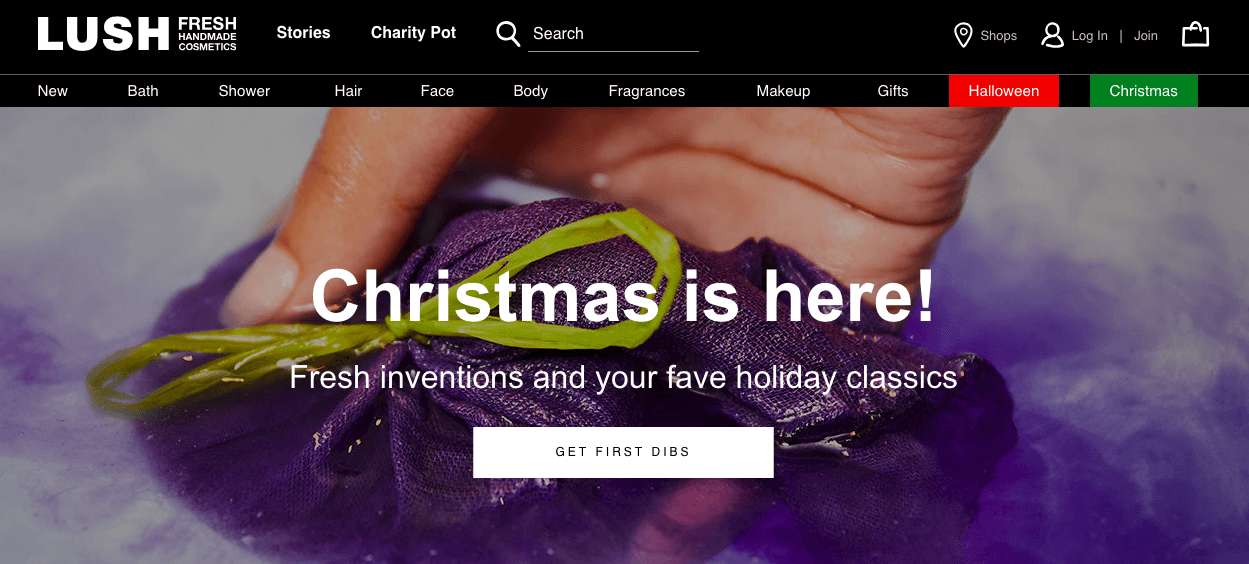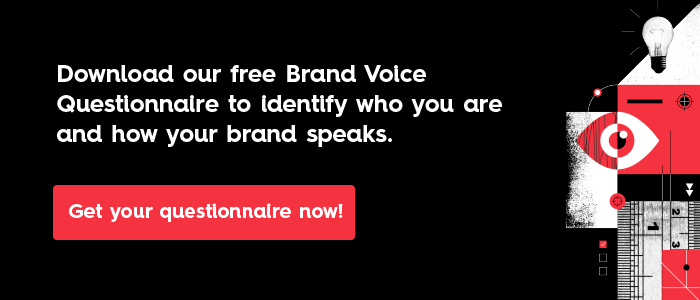A strong brand message is one of the best tools to entice people to interact with you. Whether it’s a Facebook ad, a product description, or a CTA, you have a million opportunities to use good copy to make a connection. But so many brands let these opportunities go to waste, making brand messaging mistakes—both big and small—that either turn people off or fail to make an impact.
We hate to see bad messaging happen to good brands, so we have a few tips to make your copy even better before you send it out the door.
The 7 Brand Message Mistakes You Might Be Making
How do you make sure your copy connects every time? Here are the mistakes to avoid, plus the fixes that will help you improve the brand message you deliver in every piece of content.
1) You Aren’t Telling Your Brand Story
This is one of the most common and frustrating mistakes we see: a brand message that offers no value, no benefit, and pretty much nothing of interest. In short, it doesn’t really tell a story.
Think of an organic hair care brand that sends a mailer promoting “new shampoo!” There are plenty of new hair products on the market, so why should you care? Now if that mailer said, “Does your shampoo save the planet? Ours does.” There’s a story, a hook—something you definitely want to know more about.
The fix: Follow our guide to build out your brand messaging, and download our free brand messaging template below.
This will help you outline your tagline, value prop, and messaging pillars. This framework helps you tell your brand story cohesively and consistently, particularly through messaging pillars (aka major talking points/benefits that tell people what you do/why you do it better).
Brand Messaging Framework

Any time you craft brand messaging, it should communicate one (if not more) of these brand messaging pillars. Sending a new drip campaign? Center it around a pillar. Spotlighting a customer? Center it around a pillar. The more you create a cohesive throughline in your messaging, the better your message will be received.
2) You’re Using the Same Brand Message for Everyone
You know firsthand how quickly you tune out when you see a generic or templated email response. If it doesn’t speak directly to you—your needs, wants, interests—it’s irrelevant. The same goes for your brand message. A product or service offers different things to different people. But when a brand uses the same vague, generic messaging for everyone, it’s no surprise the copy doesn’t connect.
The fix: To write catchy copy that speaks to specific types of people, you need to know who they are. Personas, which represent your different target segments, can help you figure out who you’re talking to and help you tailor messaging accordingly. Follow our guide to create personas, and use our free personas template if you haven’t created them before.
Example: Slack does a fantastic job of using brand messaging to communicate different benefits to different types of people.



3) There’s No Emotional Hook
What grabs people’s attention? What makes people sign up, download, or buy? Emotions. But so much brand messaging lacks an exciting emotional hook. It focuses on the “what” not “why,” which makes it much less impactful.
The fix: Remember that your brand messaging is meant to support your value prop, which includes emotional benefits. To come up with brand messaging, think about what your brand does. Do you solve a problem? Satiate a desire? Assuage a fear? What do you want people to feel after they use it? Work on translating those emotions into words (e.g., descriptive adjectives, powerful verbs), and follow our tips to write compelling copy.
Example: Patagonia’s brand is all about the spirit of adventure. To promote their new Micro Puff jacket, they lead with the enticing “Take nothing with you,” reinforcing that you’re free to experience more adventure with less stuff.

4) There’s No Brand Voice
Good brand messaging isn’t just about what you say. It’s about how you say it. Unfortunately, we see tons of brands whose messaging is so bland and soulless it could work just as well for their competitor. To make a strong connection with someone, they need to like you. And to make that happen, they need to know your personality. Using your brand voice is the best way to introduce yourself.
The fix: As you workshop your brand messaging, give it a second pass for brand voice. Think about the particular words, phrases, or tone that can properly communicate who you are. If you’re not sure what your brand voice is, use our guide to find it, as download our free brand voice questionnaire below.
Example: Everlane is a clothing company dedicated to breaking the mold through “radical transparency” in the production chain. As such, they’re eager to attract people with the same passion and vision. Thus, their career page is a personality-packed invitation that reflects the brand’s spirit.

5) You Don’t Share Your Values
People nowadays are highly swayed by a brand’s values. They want to support, interact, and build relationships with brands they feel connected to. Brand messaging is a great way to communicate those values and beliefs, yet many brands keep those beliefs buried in a random blog post or mission statement.
The fix: Look for opportunities to showcase who you are and what you support, even in the most simplest of ways. (Much like the brand messaging pillars, you can also craft stories around specific values.) However, if you don’t have a solid understanding of your brand’s values, you should download our free Brand Heart workbook, which helps you articulate your purpose, vision, mission, and values.
For more inspiration on how to communicate those values through content, check out how these 10 inspiring brands do it.
Example: Comforter brand Buffy uses eco-friendly materials in their production chain, a value reinforced in a simple Instagram post.
View this post on InstagramWe couldn’t have done any of this without you! Here’s to a comfy new year ✨
6) Not Taking Advantage of Every Piece of Copy
Your brand isn’t just communicated through your commercials. Everything from your site CTAs to your annual report can help you showcase who you are. That said, too many brands are focused on the bigger pieces of content, forgetting that anything your brand creates is an opportunity to show off.
The fix: Look for ways to inject a little personality and enhance the brand experience in messaging like your CTAs, product descriptions, Twitter bio, etc. You can also use these simple tips to find your brand personality.
Example: LUSH is an eco-friendly cosmetics brand that does a great job of injecting personality into everything from their CTAs to their packaging. Case in point: Instead of a generic “Shop exclusive gifts” CTA, they encourage you to “Get first dibs.”

7) Not Writing For the Medium
It’s easy to copy, paste, and condense when you’re publishing on different platforms. Your press release may be an abridged form of a blog post, your Facebook promo an abridged form of your press release. But remember that people communicate differently on different platforms, and that this can be both a blessing and a burden.
The fix: When you’re crafting brand messaging, especially content campaigns, identify your publishing strategy ahead of time. Where will you be publishing, and how does content need to be adjusted? Know from the get-go.
Example: How does a health insurance company connect on Instagram? For Oscar, whose mission is all about guiding people to the right healthcare (and therefore healthiest life), a weekend-ready post does it well.
Remember: Brand Messaging Starts With Brand Strategy
There are many ways for a brand to communicate, but communication (be it visual or verbal) is ultimately meant to help you execute your brand strategy. Without a fully fleshed out strategy, it will be difficult to ensure your brand messaging helps you achieve your brand goals.
To help your brand tell its story as effectively as possible:
- Complete your brand strategy. Download our free brand toolkit, and check out our guide to create a brand strategy to give your brand a solid foundation.
- Tell the right stories. Follow our guide to come up with creative content ideas, learn how to tell your brand story effectively, and find out how culture marketing can help you create unique content.
- Get inspired by other brands. See how these 15 brands tell their stories in unique ways.
- Optimize your content production. Find out how to create high-quality content more efficiently.
- Get the right eyes on your content. See our ultimate guide to content distribution for our best tips to increase your reach.
That said, this can all be a lot to undertake if you don’t have the time, bandwidth, or resources to do it effectively. If you’re stuck at any point, feel free to give us a holler. We’d love to help you with any aspect of your brand strategy.








